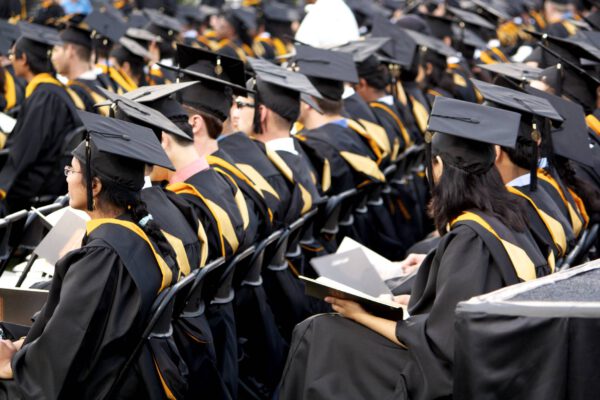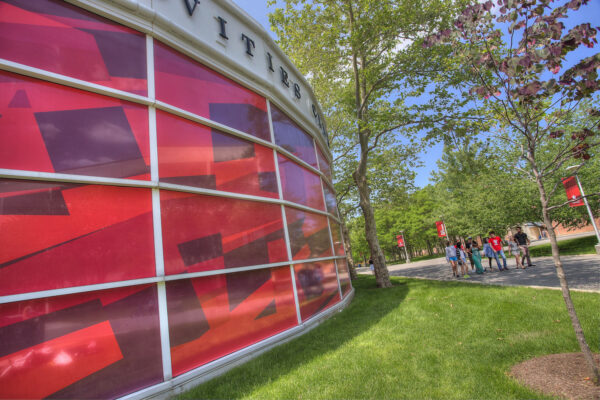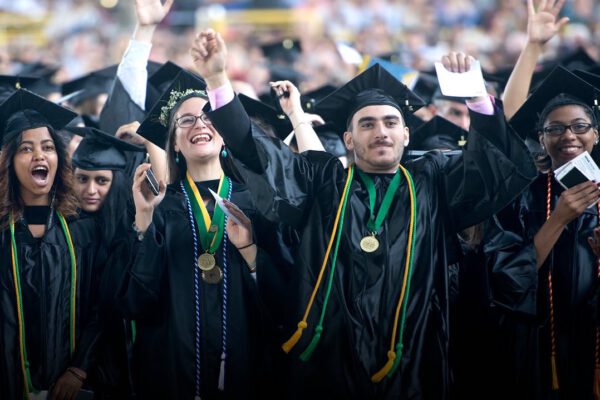A Conversation on Globalization and Innovation: Best Practices for the Higher Education Community
By Sue-Yeon Song
The relationship between globalization and innovation is complex, timely, and certainly critical given the dynamic landscape for teaching and learning in the 21st century. During ACE2017, the session “Does Innovation Boost Global Perspectives?” hosted by the ACE Council of Fellows, tackled the relationship between these two important concepts.
The discussion was moderated by Karen J.L. Burg (Harbor Lights Endowed Chair and professor, University of Georgia College of Veterinary Medicine), and the panelists included Doris R. Helms (provost emerita, Clemson University (SC)), Paul R. Sanberg (senior vice president for Research, Innovation, and Economic Development, and president, University of South Florida Research Foundation), and Ann McKenna (professor of engineering and director, Polytechnic School, Arizona State University).
The session was organized as a Q&A format, where the moderator posed several questions about globalization and innovation to the panelists. The lively conversation provided meaningful ways for the higher education community to carry out best practices for students, faculty and administrators.
Q1. How do you see in your own sphere and vision that innovation boosts global perspectives? What are some examples?
All three panelists agreed that innovation does foster global perspectives, although their answers addressed different aspects of the claim. McKenna shared that she often asks her students to widen their scope and engage more than the local perspective. She added that innovation is successful when it is responsive to the needs of the society creating value in a unique way. In her view, global perspectives have the potential to “satisfy the needs and create value.”
Sanberg highlighted that global perspectives are essential for research. In his field of medical sciences, one should always consider the global perspective. He believes that considering other countries’ perspectives are important for innovation.
Helms indicated that there is a particular pathway to innovation, explaining that, “It starts from an imagination. Imagination translates to ideas, ideas to innovation, and innovation to invention.” The role of educators is to think what they can do to impact students while on each part of the journey. How do you take imagination and turn it into an idea? How do you help students throughout the process? What can your faculty do to foster the imagination?
Q2. What are the obstacles and challenges for launching innovative programs at campuses? What are best practices for getting over those obstacles?
McKenna pointed out that the challenges included lack of time and resources. She explained, “How to manage to make sure your operation runs including teaching students, doing research, and pursuing faculty roles, in addition to being innovative at the same time? If passionate, they will make it happen, however, it still needs time and resources.”
She emphasized the importance of risk-taking, saying, “The mindset of innovation is connected to risk-taking. At the risk-taking juncture, that is where innovation can happen.” For example, encouraging faculty to work across different colleges would be challenging. However, she believes that when disciplines come together that is where innovation can happen. In doing so, “You set a good groundwork of culture in an innovative way.”
Sanberg and Helms both shared experiences from their campuses. Sanberg discussed a project from the University of South Florida (USF) where they worked to innovate their systems and to enhance the institution’s competitiveness. He said that USF implemented entrepreneurship, faculty education, tenure promotion and changes in reward structures, which granted the institution a top 10 ranking in university patents for six years running.
Helms talked about an interdisciplinary program that her institution launched in 2005. Although it was slow in the beginning, the program brought in structures such as credit systems, rewards to students and faculty, partnerships with global companies and external funding sources. The initiative turned out to be a success, producing many publications and patents, and recently students started working in 17 different countries through the program.
Q3: What is the meaning of “global perspective”? How do you measure it?
The panelists seemed to agree on the importance of looking at the wider higher education landscape. McKenna argued that an institution can provide support to the pipeline, i.e., a pathway from education to industry where students can connect with companies that are partnered with their institution.
“The nature of industry is global,” she said. “It is all interconnected, interconnected in more ways than we realize.”
Sanberg emphasized how important it is to learn from other countries. Small economies such as Taiwan, South Korea and Israel are good examples of a different perspective on research and development, and they all rank high in the number of patents per capita. Helms suggested encouraging students to travel abroad and holding discussions to stimulate both students’ and faculty’s global thinking.
In addition to the main questions which guided the session, questions from the audience covered the nature of innovation and the idea of diversity and inclusion. Helms pointed out interactions between students from various disciplines can help them see that innovation is not limited to just certain fields but instead is interlinked. In McKenna’s view, innovation happens not independent of culture and people.
“While you may need certain knowledge to come to bear to get innovation into functionality, it is going to interact with humans in some way regardless of disciplines,” she said.
Lastly, McKenna commented on how global thinking is related to diversity and inclusion. She asserted that while global perspective means bringing together people from different cultures, mindsets and experiences, how we create environments that allow us to celebrate differences is even more important for higher education institutions.
“If you know students from different countries and once you are connected to one, you are connected to all. It is a network. The more you bring them in, the more you have access to others within that community,” she said, characterizing it as the concept of “inclusive innovation.”
If you have any questions or comments about this blog post, please contact us.


